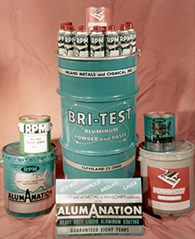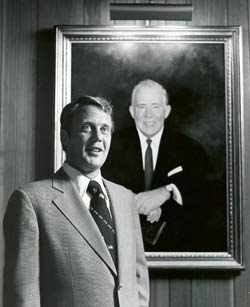
Republic Powdered Metals Alumanation
The Heritage and Values of RPM

In May 1947, Frank C. Sullivan founded Republic Powdered Metals, the forerunner to RPM International Inc. The company manufactured and sold a heavy-duty aluminum roof coating called Alumanation, which is still sold today. Sales in the first year reached $90,000. From the beginning Sullivan determined that the success of the business would rest with its people. “Hire the best people you can find,” he said. “Create an atmosphere that will keep them. Then, let them do their jobs.” RPM operates under this same philosophy today. Every year under his leadership, the company attained sales and earnings increases

In August 1971, Frank Sullivan died suddenly. Later that same year, RPM, Inc. was formed to become a holding company to develop a more aggressive acquisition program in a rapidly consolidating paint and coatings industry. Frank’s son, Thomas C. Sullivan, who was previously president of Republic Powdered Metals, became chairman and chief executive officer of the holding company. He and James A. Karman, who was elected president and chief operating officer in 1978, led RPM for more than three decades.
After more than 30 years at the company’s helm, Sullivan and Karman retired as executive officers of the company in 2002. During their tenure, net sales increased to $2 billion from $11 million, net income increased to $101.6 million from $0.6 million, cash dividends per share increased to $0.50 from $0.0035 (split-adjusted), and a $1,000 investment in RPM shares in 1971 would have been worth more than $100,000.
Tom was succeeded by his son, Frank C. Sullivan, who became president and chief executive officer in 2002. He has continued to lead the company in a manner consistent with the legacy created by his father and grandfather before him. RPM’s strategy for growth remains to: establish and maintain brand leadership in the markets it serves, strike a balance between industrial and consumer markets, generate growth both organically and through acquisitions, and to maintain an entrepreneurial operating culture.